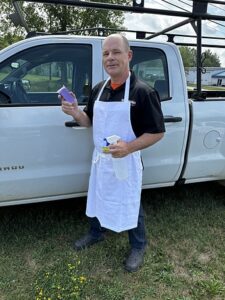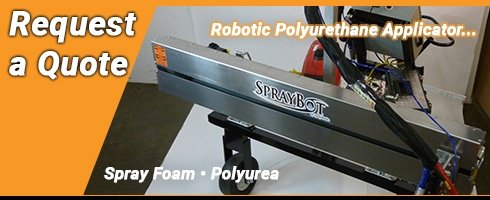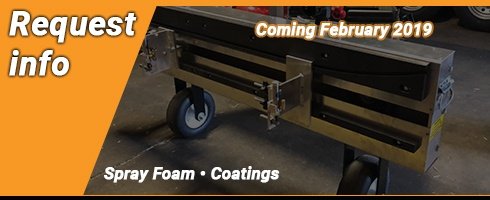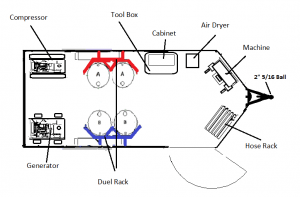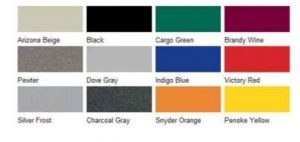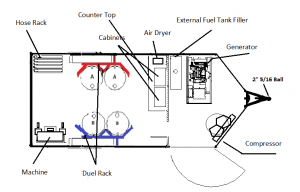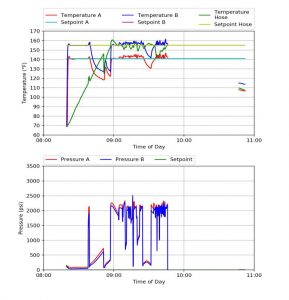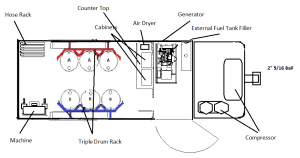Which each spray foam project, your goal is to not only complete the task but to keep everyone safe and ensure the surrounding area is as clean as possible. But sometimes accidents happen. In these situations, it is critical to show that you are knowledgeable about the clean-up process and capable of conducting it.
In this blog, we will go over how to prevent the dreaded spray foam overspray. We will also address ways to clean it up when it happens.
Understanding Spray Foam Overspray
During spray foam application, the material you’re working with begins as a liquid and then expands into a foam. Spray foam overspray happens when the liquid is carried by the wind and lands on unintended targets, later expanding into the foam. The result will look like various-sized white spots and will likely frustrate customers or property owners. With this in mind, you will want to take spray foam overspray prevention very seriously. It’s a lot easier to prevent spray foam overspray than it is to clean it up.
Spray Foam Overspray Prevention
Spray foam overspray prevention can be accomplished with just a few extra steps before beginning your project. Prevention can minimize material waste, ensure a clean finish, and improve the overall efficiency and appearance of the job.
To prevent spray foam overspray, you can do the following:
- Try to have anything that does not need to be in the workspace moved a safe distance away
- Use proper overspray protection like plastic sheets, burlap, cardboard and more to cover items that can’t be moved
- Utilize windscreens or canopies during windy conditions to prevent the foam from landing escaping the spray area
- Adjust the spray gun setting to control the flow and fan pattern depending on the surface area and weather
- Maintain an appropriate distance from the surface you are spraying
- Make sure everyone on the team is familiar with the equipment
- Most importantly, if wind conditions are too high, reschedule spraying for another day
Cleaning Up Spray Foam Overspray
If your spray foam overspray prevention efforts fall short, you will be the first to hear from those affected. When this happens, be sure to assure customers that spray foam overspray can be removed from their property. A common place we see spray foam overspray is on vehicles, so let’s take a look at the detailed process for cleaning up spray foam overspray on cars.
Materials Needed
- Magnifying loupe
- Distilled water
- Paper towels
- Razor blade
- Clay bar
Procedure
- Give a letter to the owner of the vehicle that states what happened and how you plan on fixing it to ease the initial tension
- Put on an apron to prevent any zippers, belts, buttons, and other items from scratching the car
- Use the magnifying loupe and identify where the overspray occurred
- Note any preexisting scratches, dings, and dents – take photos if needed
- Optionally, wash the car (if you use a pressure washer, be sure to keep it under 3000 PSI)
- Clean windows by spraying on the distilled water to lubricate the surface, using the razor blade to scrape off the excess, then cleaning the surface off with a paper towel
- Remove spray foam overspray from the car body by lubricating surfaces with distilled water and cleaning them with a clay bar, then wipe away until there are no contaminants left
- Inspect one last time for residue and repeat the process until there are no traces left
Be sure to visit our YouTube channel for an overview on how to take care of spray foam overspray on cars!
Additional Tips
- Lubricate the window and wipe away overspray in one direction using a razor blade to prevent scratching and streaks
- Use distilled water on windows to prevent streaks and spots
- Utilize the right clay bar to clean up spray foam overspray because it will be much easier to hold and it is the preferred product from car detailers
- Hire a car detailer who has knowledge of the area if you are not comfortable conducting the steps above
Frequently Asked Questions About Spray Foam Overspray Prevention and Clean Up
Can weather conditions impact spray foam overspray?
Weather conditions like wind speed and direction are big factors in spray foam overspray. For this reason, we suggest monitoring weather conditions and considering postponing the application if the wind gusts will be too strong. This will also ensure an even application on the surface.
How can I improve my spray foam overspray prevention techniques?
Practice and experience are key for reducing spray foam overspray. Try regularly reviewing your techniques and attending training sessions to stay updated on the best practices in the industry. Additionally, analyzing any overspray incidents and correcting anything that went wrong can help refine your skills and prevent the mess.
What happens if spray foam overspray lands on landscaping or grass?
If you are applying spray foam on a roof, there’s a chance that the overspray will drift downward onto the landscaping when proper precautions aren’t taken. Depending on the severity of the overspray, you should not need to replace plants because the foam usually degrades with time. If the spray foam does not go away, try trimming impacted leaves or branches to give those portions a fresh start.
Learn More from SprayWorks Equipment
We hope you enjoyed this informational blog on how to prevent and clean up spray foam overspray.
If you are in need of additional tips, want to learn about our line of equipment, or are interested in signing up for one of our classes, be sure to contact us today.

